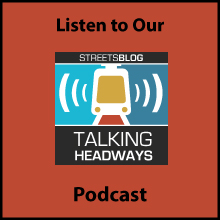The Overhead Wire Daily | On the Edge
September 12, 2024
Recently we’ve chatted a lot about a paper done by Professors Chris Redfearn and Anthony Orlando (Podcast | Blog) which discusses how Texas and California are two very different regulatory markets but seeing very similar rises in housing prices as they run out of sprawl-able land.
California is expensive but Texas is catching up because there’s less access to activity centers from these new areas of tract housing. As I mentioned while chatting with Chris and Anthony, I thought other cities around the country would not be far behind and they are looking into that as well. But we continue to see signs of this happening.
An item shared by Governing today about Alabama cities discussed how commute times to major cities from the suburbs are growing. If what Chris and Anthony are saying matches outside of just California and Texas, this could be an indicator of how smaller metro regions see housing costs spike in the future. Many states will likely respond to this with traffic models that say they should be widening highways. But that only postpones the inevitable as they should be more proactive in providing access improvements and less reactionary to past trends.
The costs of not thinking of city building and regional planning through an access lens are likely to result higher housing costs, but also loss of life and property.
As fires get more intense and regions sprawl, we’ll see more confluence events like the Marshall Fire in Louisville Colorado where a whole suburban neighborhood was torched by a fire propelled with 100 mph winds. At this moment The Line fire is raging outside of Los Angeles threatening 65,000 buildings.
But it’s not just fire, it’s extreme weather events fed by climate change that dump massive amounts of rain in one spot and sea level rise which impacts the 40% of Americans that live in a coastal county. The growth and sprawl that has been touted as affordable for so long looks like it will soon be coming to collect the interest. And vulnerable populations will be asked to pay the bill.
As Chris and Anthony said on the show, they still need to do more work to wrap their heads around what their findings mean and warn against pitching silver bullet solutions until we get more details. But what they’ve found initially started a chain reaction in my mind of all the impacts of our transportation and housing decisions and investments, as well as how the regulatory environment and private insurance will react.
The mobility to the edge of the region mindset has gotten us to this point where housing prices are high and people pay with commute times and flood warnings. A different way is possible.
***
For this intro post and more news in your inbox every morning, sign up for a two week free trial of The Overhead Wire Daily, our popular newsletter established in 2006.







